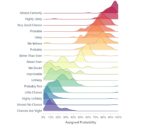
by tyler garrett | Jun 12, 2025 | Data Processing
Imagine managing large-scale applications and data environments without ever fearing downtime or data loss—sounds like a dream, doesn’t it? As complexity scales, the reliability of your systems hinges on the right strategy for state management. At the intersection of robust data analytics, cutting-edge software development, and strategic innovation, the debate between checkpoints and snapshots emerges front and center. Do you find yourself puzzled over these terms? You’re not alone. Today, we’ll break down these concepts clearly, confidently guiding you toward strategic insights, enabling smarter data-driven decisions, and ensuring your stateful applications remain operational without the looming specters of costly downtime or data corruption.
Understanding the Core: Checkpoints and Snapshots Explained
Before diving into strategic considerations, let’s clarify exactly what checkpoints and snapshots represent in state management contexts. These two approaches frequently appear in distributed computing, databases, and modern data engineering environments, yet distinct differences in how they operate can dramatically impact your workflow efficiency.
Checkpoints: Consistent States Captured Periodically
A checkpoint is often understood as a known good state of a system at a specific point in time. Typically integrated directly into applications or databases, checkpoints are taken periodically at predefined intervals. Imagine automatically saving your work-in-progress document periodically so, in the worst case, you only lose a few recent edits. In more complex data streaming environments, pipelines implemented with idempotent processing methodologies leverage checkpointing to save application state, enabling rapid recovery and guaranteeing reliable, repeatable outcomes without duplicated effort or data loss. Simply put, checkpoints ensure that recovery becomes seamless by saving a “known good state” periodically.
Snapshots: Comprehensive, Point-in-Time Copies
A snapshot, in contrast, is akin to capturing an instantaneous copy of data at a given moment. Imagine taking a photograph of your database at exactly 3:00 PM—a static image reflecting exactly the data’s condition at that exact moment, unaffected by real-time operations happening subsequently. In modern data engineering scenarios, snapshots play a pivotal role in disaster recovery and backup management. Snapshots are beneficial when you need comprehensive rollback states, full data audits, or historical analyses. For understanding visualization needs or iterative development in analytics, snapshots can prove invaluable for quick experimentation—an example of bringing flexibility into visualization testing could be found in our guide on creating a basic bar chart or line graph for data insights.
The Strategic Choices: When to Choose Checkpoints or Snapshots
While both checkpoints and snapshots seem closely related on the surface, your business context will define the appropriate choice clearly. A strategic determination rests upon several factors including recovery objectives, latency sensitivity, and analytical requirements.
Rapid Recovery and Continuous Operations: Favor Checkpoints
When continuity and minimal recovery time are paramount, checkpoints clearly outshine snapshots. By regularly storing incremental states, checkpoints optimize the recovery process—enabling your operations to resume rapidly after any interruption. Consider, for instance, modern streaming and low-latency data ingestion platforms where quick recovery after transient failures is essential. Using checkpoints—leveraged through concepts like modern ELT methodologies rather than traditional ETL—reduces downtime and enhances operational reliability. For decision makers seeking continuous uptime, checkpoints present the preferable strategic choice.
Historical Data Integrity and Comprehensive Backups: Opt for Snapshots
Conversely, snapshots provide complete, holistic visibility into your data at specific historical points. When audit trails or full restore capabilities outweigh the considerations of continuous incremental state management, snapshots stand unrivaled. For industries such as finance or healthcare—where regulatory compliance increasingly imposes stringent data integrity requirements—snapshots are crucial for comprehensive backup strategy and thorough rollback capability. Choose snapshots if your firm prioritizes extensively analyzing past states, tracing precise data lineages, or securely managing historical data compliance needs without compromise.
Performance and Scalability: Comparing Resource Impacts
Beyond recovery speed or historical copies, checkpoints and snapshots differ significantly in terms of their resource utilization and scalability impact—two critical factors for any robust enterprise infrastructure.
Checkpoint Efficiency and Minimal Impact on Resources
Strategically adopting frequent incremental checkpoints can enhance system efficiency dramatically. Since checkpoints only capture incremental state changes, they naturally reduce storage requirements and minimize the demand on resource-intensive performance overhead that snapshots often imply. In scenarios where fast-paced data flow and data-driven revenue optimizations are at stake, lightweight checkpoints enable agile and responsive data platforms without significant penalties on compute resources or bandwidth.
Snapshots: Resource Trade-offs for Comprehensive Data Protection
However, it’s crucial to recognize snapshots impose additional resource commitments. When capturing full images of data at a specific instant, snapshot strategies inherently require higher bandwidth, processing overhead, and extensive storage infrastructures. Despite higher consumption, snapshots provide unmatched confidence and traceability for comprehensive data backups and audits. Decision-makers deploying snapshots strategically realize potential trade-offs in performance for the greater resilience and compliance these full data captures facilitate—particularly essential when holding crucial business records accountable to regulatory scrutiny or compliance audits.
Integrating Checkpoints and Snapshots: An Optimized Hybrid Approach
The tech-savvy organization understands that these aren’t mutually exclusive methodologies—a skillful blending of checkpoints and snapshots is often the strongest solution, empowering businesses with optimal risk management along with streamlined resource consumption.
Leveraging Combined Approaches for Ultimate Reliability
Consider an environment where both approaches complement one another strategically. Regular lightweight checkpoints ensure operational continuity, rapid recovery, and seamless maintenance of real-time data pipelines and mission-critical data analytics. Meanwhile, periodic snapshots provide long-term historical archiving or compliance-friendly backups. Leadership aiming for strategic agility can adopt this hybrid approach—to build resilience using snapshotting, paired with fast recovery enabled by checkpointing, replacing outmoded approaches identified in our piece on overrated tools in data engineering.
Implementing Smarter Strategies with Expert Guidance
Transitioning effectively to integrated state management strategies requires deep expertise in data systems architecture and foresight. Organizations looking to fully unlock these comprehensive strategies often benefit from external expertise—such as industry-leading guidance available from specialized consulting services in analytics and innovation like our AI agent consulting services. By entrusting implementation to informed specialists, companies strategically position themselves to stay versatile, adaptive, and scalable—fundamentally necessary as technology accelerates innovation and reshapes competitive landscapes.
Security Considerations: Ensuring Proper Access Controls
An integral facet of state management often overlooked at the strategy level is security—particularly managing appropriate access permissions to stored states. Whether checkpointing or snapshotting, protecting access from unauthorized individuals is critical both from a data privacy standpoint and regulatory compliance.
Managing and Revoking Access—Practical Imperatives
Trustworthy state management mandates regular monitoring, access reviews, and rapid privilege revocation. Organizations handling sensitive or confidential states must develop robust strategies for revoking privileges and managing access control effectively. Integrating checkpoints or snapshots into your operations should occur alongside clear protocols for secure management, thus minimizing risk exposure, eliminating unauthorized changes, and keeping operational integrity intact.
Adapting Strategically for Compliance & Data Governance
Proactive compliance initiatives dictate stringent data governance measures. Secure checkpoints and snapshots allow for audits or forensic analyses, essential when tackling critical incident recovery or regulatory audits. For organizations focused on adaptive, scalable security strategies, hourly software consulting models can offer nuanced strategic insights—as detailed further in our exploration into why hourly software consulting represents the future of scalable innovation and flexibility.
Conclusion: Mastering State Management
By thoroughly understanding, strategically deploying, and securing checkpoints and snapshots, data-intensive organizations confidently manage operational integrity, foresee potential interruptions proactively, and respond swiftly to challenges. Employing checkpoints ensures immediate continuity, optimized performance, and incremental protection, while robust snapshots enhance historical effectiveness, audit agility, and regulatory precision. Ultimately, expertly combining checkpoints and snapshots presents an ideal, future-proof roadmap—removing the tears from your state management strategy.

by tyler garrett | Jun 12, 2025 | Data Processing
In today’s hyper-paced data environments, organizations face an intricate balancing act: finding the precise batch size that unlocks maximum throughput, optimal resource utilization, and minimal latency. Whether you’re streaming real-time analytics, running machine learning models, or batch processing hefty transactional data sets, batch size can profoundly impact your throughput and overall performance. Too small, and you risk overwhelming your system with overhead; too large, and you’re slowed by bottlenecks and unwieldy latencies. Understanding the delicate dance between batch size and throughput is essential for modern businesses striving for efficiency and scalability. Let’s break down the intricacies behind the batch size dilemma and identify strategies to confidently pinpoint throughput’s sweet spot.
Why Batch Size Dramatically Impacts Throughput
Batch processing, though conceptually straightforward—grouping operations or transactions into larger units—becomes complex once performance optimization enters the equation. At its core, batching reduces overhead. With fewer discrete IO calls, network packets, or system interrupts, batching promises greater efficiency in theory. However, the practical landscape is nuanced. If batches become too large, memory usage can spike catastrophically, placing unnecessary strain on available resources and jeopardizing overall system availability.
When examining real-time analytics or streaming applications, throughput becomes critical. Consider high-throughput applications like financial trading platforms or IoT sensor data ingestion services. Here, the timing and latency of data processing carry immense consequences. Small batches enable lower latency but can significantly reduce throughput because of the additional overhead present with many small batches. Conversely, large batches improve resource efficiency but introduce problematic latency. In our projects, we’ve seen clients initially struggle with these competing constraints, wrestling between immediate responsiveness and maximal throughput. This trade-off, though sometimes subtle, impacts decision-making directly, influencing operational costs and strategic outcomes.
Organizations that leverage expert guidance—such as hourly consulting support—can quickly refine batch sizes within their unique operational context, shortening iterations and addressing bottlenecks efficiently.
Recognizing the Key Indicators of a Problematic Batch Size
To optimize throughput, it’s critical to quickly spot batch size issues. Symptoms often manifest subtly before escalating into systemic problems. Understanding the primary indicators gives your team strategic leverage in adjusting operations before major impacts occur.
Excessive Latency and Slow Response Times
Slow response times frequently indicate overly large batch sizes. Although larger batch sizes may contribute to throughput efficiency, they negatively impact latency-sensitive use cases. If you’re experiencing delays that directly affect customer experience or business agility, your batches may be too large. In such cases, smaller batch sizes can ensure more predictable response times. This approach aligns perfectly with real-time dashboards—like those detailed in our article on creating interactive dashboards in Tableau—where excessive latency can significantly detract from analytics effectiveness.
High CPU/Memory Utilization and Resource Bottlenecks
Large batch sizes accumulate significant memory footprints, often resulting in spikes in CPU and memory utilization. This bottleneck impacts system stability, causing incidents and degrading performance. Monitoring infrastructure resource utilization and analyzing patterns can help pinpoint optimal batch sizing efforts. Proactivity here helps avoid emergencies and operational outages. Strategic adjustments, guided by expertise in solutions provided by services like our AWS consulting services, enable businesses to rapidly pinpoint ideal configurations.
Low System Utilization and Decreased Efficiency
Ironically, overly small batch sizes risk inefficiencies from repeated processing overhead. Underutilized network or computation resources indicate batch sizing may be insufficient. Optimal batches should effectively occupy resources without pushing systems beyond their capability. Ensuring your data stream employs appropriate techniques, such as those explained in our deep dive into backpressure mechanisms in high throughput data streams, enhances operational stability without sacrificing throughput.
Finding Your Throughput Sweet Spot: Analytical Strategies for Optimization
Determining optimal batch sizes demands an analytical and experimental approach. Relying merely on intuition or generalized benchmarks rarely results in long-term stability or sustained performance gains. Instead, strategic analytical frameworks and targeted experimentation can precisely determine your batch sweet spot.
Implementing Quantitative Monitoring Techniques
Accurately tracking key metrics such as throughput, latency, resource consumption, and error rates provides quantitative insights into your system performance. Dashboards that visualize workflow analytics are essential here—advanced dashboards employing robust analytics and visualization grammars (for example, using methodologies outlined in our article on visualization grammar implementation with Vega-Lite) can rapidly surface batch size impacts and simplify decision-making.
Testing via Controlled Experimentation
Optimizing batch throughput often requires experimentation. Simulate representative use-cases across different batch sizes in your staging environment. Control conditions tightly, track data closely, and refine batch parameters iteratively based on your observed outcomes. Leverage automated load-testing tools to systematize experimentation and ensure findings are repeatable and actionable. An agile experimentation methodology, bolstered by an experienced consulting partner, can lead businesses to leverage data-driven innovation, eliminating guesswork.
Designing Scalable Systems to Navigate Batch Size Challenges
Solving today’s batch size dilemmas isn’t just a matter of tweaking operational parameters. It often requires rethinking system architecture for scalability. Modern technologies can vastly improve flexibility and make batch size optimization significantly easier.
Leveraging Automation and AI-driven Batch Management
Emerging technologies leverage machine learning-driven batch size management capable of dynamically optimizing batch operations. Such intelligent systems adapt in real time based on usage patterns and historical data context. This approach significantly simplifies management burdens, reducing manual interventions without sacrificing performance. Businesses seeking sustainability should consider investing in automated batch orchestration solutions or consulting services designed to facilitate operational innovation. For more context on whether custom or pre-built solutions fit your scenario, explore our strategic guidance article discussing custom vs. off-the-shelf solutions.
Scalable Infrastructure to Adapt for Changing Operational Needs
Infrastructure flexibility ensures your system can quickly respond as ideal batch sizes evolve. Cloud computing platforms—such as AWS infrastructure—can dynamically scale compute, memory, and network resources according to batch processing demands. This elasticity provides a meaningful strategic advantage, ensuring infrastructure seamlessly adapts as throughput optimization strategies evolve, thus improving system reliability in the long term. Engaging AWS experts through partner services, such as our dedicated AWS consulting services, accelerates your ability to deploy robust architectures that can proactively adjust to shifting batch size requirements.
Standardizing Batch Processes for Long-term Scalability
A structured, standardized approach to metadata and systems interoperability also greatly simplifies the batch optimization process. Implementing widely recognized metadata exchange standards, such as DCAT, empowers clear data strategy alignment and robust governance. Detailed metadata management, as described in our comprehensive guide on metadata exchange standards implementation, ensures clarity in data flow, substantially simplifying batch adjustments as requirements shift over time. Thoughtful data strategy frameworks coupled with standardization help guarantee longevity in batch throughput optimization.
Final Thoughts: Embracing the Batch Size Journey for Optimal Throughput
The batch size dilemma presents a strategic challenge worth embracing rather than fearing. By carefully adjusting batch sizes with ongoing analysis, precise monitoring, strategic experimentation, and modern infrastructure capabilities, organizations can effectively conquer this performance puzzle.
Partnering with experts, leveraging automation, and standardizing processes adds significant value, empowering decisive actions and operational clarity amidst complexity. Remember—the ideal batch size isn’t a fixed destination, but rather a regularly revisited balance constantly refined as your organization’s data needs mature. By embracing recognized best practices and expert insights, businesses position themselves to strike optimal throughput sweet spots consistently, benefiting from optimized resource allocation, lower operational costs, and superior performance.

by tyler garrett | Jun 12, 2025 | Data Processing
In an age where precise geospatial data can unlock exponential value—sharpening analytics, streamlining logistics, and forming the backbone of innovative digital solutions—precision loss in coordinate systems may seem small but can lead to large-scale inaccuracies and poor business outcomes. As organizations increasingly depend on location-based insights for everything from customer analytics to operational planning, understanding and mitigating precision loss becomes paramount. At Dev3lop’s advanced Tableau consulting, we’ve seen firsthand how slight inaccuracies can ripple into meaningful flaws in analytics and strategic decision-making processes. Let’s dive deeper into why coordinate precision matters, how it commonly deteriorates, and explore solutions to keep your data strategies precise and trustworthy.
Geolocation Data – More Complex Than Meets the Eye
At first glance, geolocation data seems straightforward: longitude, latitude, mapped points, and visualized results. However, the complexities hidden beneath the seemingly simple surface frequently go unnoticed—often by even advanced technical teams. Geospatial coordinates operate within an array of coordinate systems, datums, and representations, each bringing unique rules, intricacies, and potential pitfalls. Latitude and longitude points defined in one datum might temporarily serve your business intelligence strategies but subsequently cause inconsistencies when integrated with data from a different coordinate system. Such inaccuracies, if left unchecked, have the potential to mislead your analytics and result in unreliable insights—turning what seems like minor precision loss into major strategic setbacks.
Moreover, in the transition from manual spreadsheet tasks to sophisticated data warehousing solutions, businesses begin relying more heavily on exact geospatial positions to provide accurate analyses. Precise customer segmentation or efficient supply chain logistics hinge deeply on the reliability of location data, which organizations often assume to be consistent on any platform. Unfortunately, subtle inaccuracies created during the process of transforming or migrating coordinate data across multiple systems can quickly accumulate—leading to broader inaccuracies if not managed proactively from the outset.
Understanding Precision Loss and its Business Implications
Precision loss in geolocation workflows generally arises due to the way coordinate data is processed, stored, and translated between systems. Floating-point arithmetic, for example, is susceptible to rounding errors—a common issue software engineers and data analysts face daily. The slightest variance—just a few decimal places—can significantly impact the real-world accuracy, particularly for industries where spatial precision is critical. Consider logistics companies whose planning hinges on accurate route mappings: even minor discrepancies may cause unnecessary disruptions, delayed deliveries, or costly rerouting.
Precision loss also carries strategic and analytical implications. Imagine an enterprise relying on geospatial analytics for customer segmentation and market targeting strategies. Small inaccuracies multiplied across thousands of geolocation points can drastically affect targeted advertising campaigns and sales forecasting. As explained further in our article on segmenting your customer data effectively, the highest-performing analytics depend on alignment and accuracy of underlying information such as geospatial coordinates.
At Dev3lop, a company focused on Business Intelligence and innovation, we’ve witnessed precision errors that cause dashboard failures, which ultimately demands comprehensive revisits to strategic planning. Investing in proper validation methods and a robust data quality strategy early prevents costly adjustments later on.
Key Causes of Accuracy Loss in Geospatial Coordinate Systems
Floating-Point Arithmetic Constraints
The common practice of storing geospatial coordinates in floating-point format introduces rounding errors and inaccuracies in precision, especially noticeable when dealing with large geospatial datasets. Floating-point arithmetic inherently carries approximation due to how numbers are stored digitally, resulting in a cumulative precision loss as data is aggregated, processed, or migrated between systems. While this might feel insignificant initially, the accumulation of even tiny deviations at scale can yield drastically unreliable analytics.
Misalignment Due to Multiple Coordinate and Projection Systems
Organizations often source data from diverse providers, and each data supplier may rely upon different coordinate reference and projection systems (CRS). Transitioning data points from one CRS to another, such as WGS84 to NAD83 or vice versa, may create subtle positional shifts. Without careful attention or rigorous documentation, these small differences spiral into erroneous decisions downstream. As detailed in our exhaustive guide on how to mitigate such risks through our handling of late-arriving and temporal data, data integrity is paramount for strategic reliability in analytics.
Data Storage and Transmission Limitations
Data infrastructure also impacts geolocation accuracy, especially noteworthy in large-scale enterprise implementations. Issues like storing coordinates as lower precision numeric types or inaccurately rounded data during database migration workflows directly lead to diminished accuracy. Properly architecting data pipelines ensures precision retention, preventing data quality issues before they occur.
Mitigating Precision Loss for Greater Business Outcomes
Businesses seeking competitive advantage today leverage analytics and strategic insights fueled by accurate geolocation data. Legacy approaches or weak validation methods put precision at risk, but precision can be proactively protected.
One effective mitigation strategy involves implementing rigorous data quality assessments and validations. Organizations can employ automated precise validation rules or even build specialized automation tooling integrated within their broader privacy and data governance protocols. Collaborating with experts such as Dev3lop, who’ve established comprehensive frameworks such as our privacy impact assessment automation framework, can further help identify and remediate geospatial inaccuracies swiftly.
Additionally, organizations can transition from traditional input/output methods to more precise or optimized data processing techniques—such as leveraging memory-mapped files and other efficient I/O solutions. As clearly outlined in our technical comparisons between memory-mapped files and traditional I/O methods, choosing the right storage and processing approaches can help businesses keep geolocation precision intact.
Building Precision into Geolocation Strategies and Dashboards
Maintaining accuracy in geolocation workloads requires a thoughtful and strategic approach from the outset, with significant implications for analytical outcomes—including your dashboards and visualizations. As Dev3lop covered in depth in our article on fixing failing dashboard strategies, geolocation data’s accuracy directly influences business intelligence outputs. Ensuring the precision and reliability of underlying geospatial data improves your analytics quality, increasing trust in your digital dashboards and ultimately enhancing your decision-making.
Achieving geolocation accuracy begins by finding and acknowledging potential points of precision degradation and actively managing those areas. Collaborate with experts from advanced Tableau consulting services like ours—where we identify weak points within analytical workflows, build robust validation steps, and architect solutions designed to preserve coordinate accuracy at each stage.
Finally, regularly scrutinize and reprioritize your analytics projects accordingly—particularly under budget constraints. Learn more in our resource on prioritizing analytics projects effectively, emphasizing that precision-driven analytics improvements can yield significant gains for organizations invested in leveraging location insights precisely and effectively.
Navigating Precision Loss Strategically
Ultimately, organizations investing in the collection, analysis, and operationalization of geospatial data cannot afford complacency with regards to coordinate precision loss. Today’s geolocation analytical frameworks serve as a strategic cornerstone, providing insights that shape customer experiences, operational efficiencies, and innovation capabilities. Decision-makers must account for precision loss strategically—investing in proactive measures, recognizing potential pitfalls, and addressing them ahead of time. Your customer’s experiences, analytical insights, and organizational success depend on it.
Partnering with experienced consultants like Dev3lop, leaders in data-driven transformation, can alleviate the challenges associated with geolocation precision loss and reap considerable rewards. Together we’ll ensure your data strategies are precise enough not just for today, but durable and trustworthy for tomorrow.

by tyler garrett | Jun 12, 2025 | Data Processing
In today’s data-driven world, handling massive volumes of information swiftly and accurately has become an indispensable skill for competitive businesses. Yet, not all data distribution methods are created equal. Among the arsenal of techniques used strongly within data analytics and innovation pipelines, hash bucketing stands out as an art form—one that combines both technical prowess and strategic decision-making. Mastery of bucketing isn’t just about choosing a suitable algorithm; it’s about ensuring efficiency, scalability, and a robust architecture that adapts seamlessly to future demands. To unlock its full potential, stakeholders must understand why certain distribution strategies succeed where others falter, and ultimately recognize how carefully crafted hashing strategies directly contribute to increased profitability, improved data health, and operational excellence.
Understanding the Basics: What is Hash Bucketing?
Before diving into sophisticated strategies, decision-makers must grasp what hash bucketing actually means and how it functions. At a fundamental level, hash bucketing refers to a method that partitions large datasets into smaller, manageable portions (buckets) using hash functions. A hash function is essentially a concise mathematical calculation where input data—whether strings, numeric IDs, or composite keys—is converted into a fixed-size numeric result. This result then determines the bucket placement, enabling efficient data storage, retrieval, and processing.
Bucketing allows large data volumes to be fractioned evenly, facilitating parallel processing and optimizing resource usage to drive performance improvements. Unlike traditional sorting methods which may take longer computationally, hashing enables near-instantaneous data distribution by leveraging numeric mapping rather than data comparisons.
Despite its simplicity, this method demands precision. For instance, ineffective hash functions may lead to uneven bucket sizes or hotspotting—a situation where a bucket holds disproportionately more data compared to others—thus degrading the system’s performance. As data complexity grows, businesses can significantly enhance their analytical capabilities by combining simple hashing fundamentals with innovative solutions like advanced Tableau consulting services to ensure strategic analytics integration at every layer.
Choosing the Right Hashing Algorithm: Tailor-Made Solutions Over Off-the-Shelf
Hash bucketing isn’t effective in isolation. Decision-makers looking to leverage this technique for robust data management must first select an algorithm aligned with their unique data environment and business requirements. Several popular algorithms exist—including MD5, SHA, MurmurHash, and consistent hash. However, picking the right one isn’t just about following trends; it demands clearly understanding data types, computational workloads, and performance expectations.
MD5 and SHA are cryptographic hashes that provide uniform data distribution but can be computationally expensive for real-time implementations. MurmurHash presents an excellent balance between speed and consistency, often favored by tech leaders seeking rapid data ingestion and analytics. Conversely, consistent hashes offer remarkable stability for distributed systems, simplifying tasks like scaling and load balancing.
To strategically select an appropriate hashing solution, prioritize performance and responsiveness required by your analytics infrastructure. If your organization is transitioning from spreadsheets and manual data manipulation, hashing algorithms will seriously enhance productivity—take a look at how to transition effectively from Excel to data warehousing for deeper insights into scaling effectively, improving accuracy, and avoiding typical pitfalls along the journey.
Battling Data Skew: Techniques to Ensure Even Distribution
Data skew is one of the most significant barriers to effective hash bucketing. An uneven distribution leads to heavy processing workloads in particular buckets, called “hot buckets,” ultimately hurting performance, system responsiveness, and reliability. Combatting data skew ensures smoother operations, easier troubleshooting, and consistent query response times.
To mitigate this issue, skilled data architects usually leverage techniques such as key salting and composite hashing. Key salting involves intentionally adding random characters or numbers (“salt”) to keys before hashing, creating better key uniqueness and reducing hotspots. Composite hashing—combining multiple data attributes or columns for hashing—also enhances uniqueness and minimizes skew.
Additionally, teams should continuously monitor for skewed distributions and perform frequent analytics-driven reviews on bucket use. Leveraging automated monitoring tools integrated within your pipeline helps pinpoint skew early and reduces production outages. Data engineers should consider adopting progressive data orchestration strategies such as feature flag implementation for progressive data pipeline rollout; this approach facilitates testing data distribution strategies gradually, reducing the risk of unexpected downtime caused by data skew and distribution imbalance.
Consistency Matters: Adapting Hash Bucketing for Scale
As your data grows exponentially, maintaining consistent hashing strategies proves crucial—especially within distributed computing or cloud frameworks. A consistent hashing technique ensures minimal disruption as nodes are added or removed, aiding seamless scaling. Its functionality is exemplified round-robin selection of buckets across servers, offering flexibility, enhanced performance, and improved reliability in distributed systems.
Deciding to utilize consistent hashing requires holistic planning complemented by best practices in database structures and systems management. As your business scales, ensure these strategies are not used in isolation but designed into an integrated data engineering framework to support sustainable growth.
A robust hashing strategy adapted proactively for scale directly contributes to long-term business profitability and innovation. Leaders interested in driving profitability with cutting-edge data-driven insights might benefit from revisiting modern data infrastructure developments—read how you can boost profitability through emerging data engineering trends in 2025.
From Spreadsheets to Structured Databases: The Value of Hash Distribution
Moving toward structured databases emphasizes the importance of data organization and reliability—and hash distribution presents considerable strategic advantages for data storage and management. Companies stepping away from traditional spreadsheet limitations and manual processes benefit immensely from this deliberate data-centric approach.
A solid hashing strategy combined with structured databases significantly accelerates data ingestion, retrieval, and provides reliable analytics that can confidently guide business decisions. By investing in hash distribution and data structuring, companies see tangible improvements such as faster queries, reduced query latency, optimized storage, and improved data management efficiency. Additionally, this ensures that decision-makers have timely insights, enhancing the effectiveness of innovation initiatives across the company.
If you haven’t fully embraced database technology yet, consider exploring installing a local database to move beyond the limitations of Excel. Leverage structured databases and hash bucketing strategies together to pave a pathway for more dynamic data analytics capabilities, streamlined information gathering, and improved decision-making agility.
Integrating Hash Strategies into a Data-Driven Culture
Hash distribution isn’t just a technology choice; it’s integral to nurturing a genuinely data-driven culture within your enterprise. Effective hashing strategies emphasize accountability around data precision, analytical capability, and actively support continuous improvement and experimentation.
When data-driven teams employ smart hash distribution and bucketing strategies practices, employees trust data reliability, decision-makers confidently use analytics, and increased organizational alignment occurs naturally. This alignment empowers rapid decision-making cycles, promoting an innovative approach toward utilizing insights effectively across every department.
Moreover, promoting and operationalizing a data-centric culture extends beyond simply adopting new technologies. Decision-makers should become champions capable of initiating strategic analytics integration and database management improvements across all organizational structures. Discover further insights about this kind of transformative impact by understanding what is a data-driven culture and why it matters.
Optimizing Hash Bucketing With Database Management Best Practices
Masterful hash bucketing involves not only choosing suitable algorithms but also consistently following database management best practices. Organized database structures, automated maintenance, proactive resource allocation, and continuously optimized queries significantly strengthen hashing strategies within a complex infrastructure.
Efficient bucket management—and database optimization in general—allows easy adjustment to changing business objectives and maximizes return on data investments. Frequently revisited optimization protocols continuously refine hashing choices, supporting increased productivity, improved analytics accuracy, and innovation capacity.
To maintain effective database management and strengthen your hashing solutions, consider implementing proven expert-recommended tactics such as streamlining your database management through automation and design improvement best practices. Ensuring consistent database optimization provides long-term sustained benefits to analytics performance, business operations, and profitability outcomes.
Data strategy demands both art and science, and achieving mastery takes strategic vision combined with technical implementation. What separates truly effective hash distribution from mediocre methods is intentionality, customized implementation, and diligent ongoing assessment—a winning formula for the modern innovative enterprise.

by tyler garrett | Jun 12, 2025 | Data Processing
In the modern world of rapid digital innovation, effectively handling data is more important than ever. Data flows ceaselessly, driving analytics, strategic decisions, marketing enhancements, and streamlined operations. However, the sheer size and quantity of data have prompted organizations to adopt more efficient storage and transmission methods. One essential piece of this puzzle is data compression, particularly zipped files. Compression enables quicker transfer, efficient storage, and swift retrieval of data, making it pivotal in a data-driven era. Understanding the specifics of streaming and working with zipped data can transform how businesses harness their most valuable resource. Keep reading to understand how modern businesses, analytics teams, and decision-makers can benefit from streamlined and compressed data flows—placing compression in motion to accelerate insights, enhance operational efficiency, and drive continuous growth.
Why Data Compression is Crucial in Today’s Business Landscape
As organizations seek to expand their digital capabilities, the volume of data grows exponentially. Every click, transaction, interaction, and operational touchpoint generates data. Uncompressed data quickly becomes cumbersome, slow to access, challenging to maintain securely, and expensive to store. Like navigating through a cluttered warehouse, finding the information businesses need becomes inefficient, impacting both cost and agility. That’s where data compression steps into the limelight.
Compression reduces data size, enabling more rapid movement, better storage utilization, and an overall increase in efficiency. Streaming zipped data leverages the optimized data structure by moving information fluidly in compressed form. When effectively applied, zipped data accelerates data analytics initiatives, empowering businesses to more swiftly gather insights, drive innovation, and respond proactively to market shifts.
Forward-thinking companies increasingly prioritize robust advanced analytics consulting services to guide their journey toward efficient data management. By strategically compressing and streaming data, businesses are better positioned to achieve agility, maintain scalability, and harness analytics insights for sustainable growth and competitive advantage.
Benefits of Streaming Zipped Data in Real-Time Analytics
In data analytics, speed combined with precision is paramount. Real-time analytics depend heavily on immediate data availability without delays or inefficiencies. Streaming zipped data empowers organizations to uphold this high standard of instantaneous analytics capabilities.
Compressed data improves bandwidth utilization, reducing latency and enhancing the overall speed of information transfers. By delivering information in an optimized format, organizations can immediately analyze real-time data, driving faster decisions that directly impact business outcomes. In industries such as manufacturing, streaming compressed data enables smoother workflows. For example, compressed data streams can be integrated into production planning systems by aligning manufacturing capabilities with anticipated demand.
Furthermore, real-time analytics enabled by compressed data enhances businesses’ abilities to conduct more agile testing and optimization. Compressed data streaming makes A/B testing more efficient as it delivers immediate access to results, allowing rapid iterations and evidence-based organizational adjustments. Explore more about the powerful impacts of optimization in our dedicated article on how A/B testing could dramatically improve your business. The enhancement in data streamlining directly translates into quicker actionability, refined decision-making processes, and ultimately, substantial organizational benefits.
Strategies and Tools for Effective Zipped Data Handling
Working with zipped data might initially seem complex, but strategic decisions and modern tools reduce complexity and remove obstacles. Effective handling of zipped data requires understanding various tools, technologies, and best practices designed to manage data in transit and storage in a compressed format.
Modern programming languages and frameworks offer comprehensive support for zipped data streaming capabilities. For instance, leveraging Python’s versatile libraries—including gzip, zipfile, or specialized libraries like zlib—makes writing scripts to compress, stream, or decompress data straightforward. Frameworks such as Apache Spark notably simplify analytics and data pipelines, enabling analysts and data engineers to intelligently incorporate zipped data as part of their standard workflow.
It’s also essential to establish robust data management processes covering data security, lifecycle, and integrity. Ensuring data quality during compression and decompression processes is critical when building enterprise-grade analytics infrastructures. Our recent publication on digital rights management for dataset distribution highlights the critical importance of safeguarding data integrity and distribution rights while managing compressed data.
Ultimately, the most effective strategy combines robust technology and thoughtful processes. Embracing both enables businesses to not only handle zipped data efficiently but also enhance team productivity, streamline analytics workflows, and lower long-term costs associated with data storage and management.
The Role of Data Engineers in Zipped Data Streaming
Successfully implementing and managing zipped data streaming relies heavily on the expertise of data engineers. These specialized professionals build and maintain data architectures, ensuring that compression workflows and data pipelines remain optimized and efficient. With the surge in artificial intelligence and advanced analytics, data engineers play an increasingly critical role in managing compressed data streams as part of scalable, intelligent analytics environments.
Data engineers optimize zipped data streaming workflows, fine-tuning each step to ensure high-quality, consistent data delivery. They map out intricate pipelines that smoothly compress, move, and decompress data across multiple platforms. Utilizing their deep understanding of data architectures, data engineers ensure data quality and resolve issues and bottlenecks swiftly. Learn more about how impactful data engineers optimize workflows for artificial intelligence initiatives in this article detailing the role of data engineers in the age of AI.
Moreover, robustly engineered pipelines result in effective and impactful analytical visualization and insights, directly influencing business strategies. Zipped data delivery enables timely, meaningful visualizations—crafting visuals with concise design elements is enhanced when data arrives swiftly and efficiently. Our insights regarding the strategic role of color in data visualization emphasize how timely and expertly compressed data can enhance visualization effectiveness and support clarity-driven decision-making processes. Data engineering excellence profoundly magnifies the benefits of compression in modern analytics environments.
Overcoming Challenges of Working with Zipped Data
While zipped data streaming undeniably offers remarkable benefits, organizations must navigate some inherent challenges to reap the fullest utility. Challenges include maintaining seamless compatibility across multiple applications and stakeholders, balancing CPU overhead in data compression and decompression during real-time analytics, and ensuring optimized, reliable data retrieval processes.
Overcoming these obstacles calls for proactive, strategically-guided initiatives. Practically, meticulous planning of data infrastructure—driven by thoroughly tested workflows—ensures optimal performance across a variety of analytics tasks.
Additionally, organizational leaders must adopt a mindset emphasizing flexibility and operational precision, regularly auditing and fine-tuning data engineering and analytics aspects of zipped data management operations. Leaders can further leverage targeted consulting offerings such as our data analytics service, designed to pinpoint and address strategic data hurdles while unlocking greater business value through compressed analytics.
A practical pathway through challenges is blending advanced technology tools, reliable managed cloud services, and insightful strategy guidance. This holistic approach allows businesses to unleash the maximum value from their compressed data streams—enabling consistent, optimized, and impactful analytics outcomes.
Future Outlook — Innovating with Compressed Data Streaming
Looking ahead, the increasing prevalence of compressed data streaming as an essential element inside modern analytics and data ecosystems becomes clear. Organizations across industries experience immense transformations as they leverage data analytics empowered by smarter, quicker, and more efficient compressed data management.
Ongoing innovations related to predictive analytics, AI, and real-time decision-making capabilities further complement compressed data streaming efforts. Industry innovators continue driving the evolution of infrastructure solutions, software frameworks, and analytical toolsets explicitly optimized for handling zipped data smoothly, securely, and at scale.
Businesses proactively integrating compression into their strategic roadmap, supported by expert-driven analytics consulting and innovative solutions, can effectively outpace slower competitors. Embracing zipped data streams, coupled with real-time analytics, offers significant speed advantages, better operational understandings, intelligent forecasting, and substantial cost savings.
In summary, compression in motion creates extraordinary opportunities for businesses seeking meaningful growth through digital transformation, efficiency, improved insights, and decisive actionability. Investing in understanding compression solutions’ strategic potential paves the way toward operational excellence and analytics-driven industry leadership.























